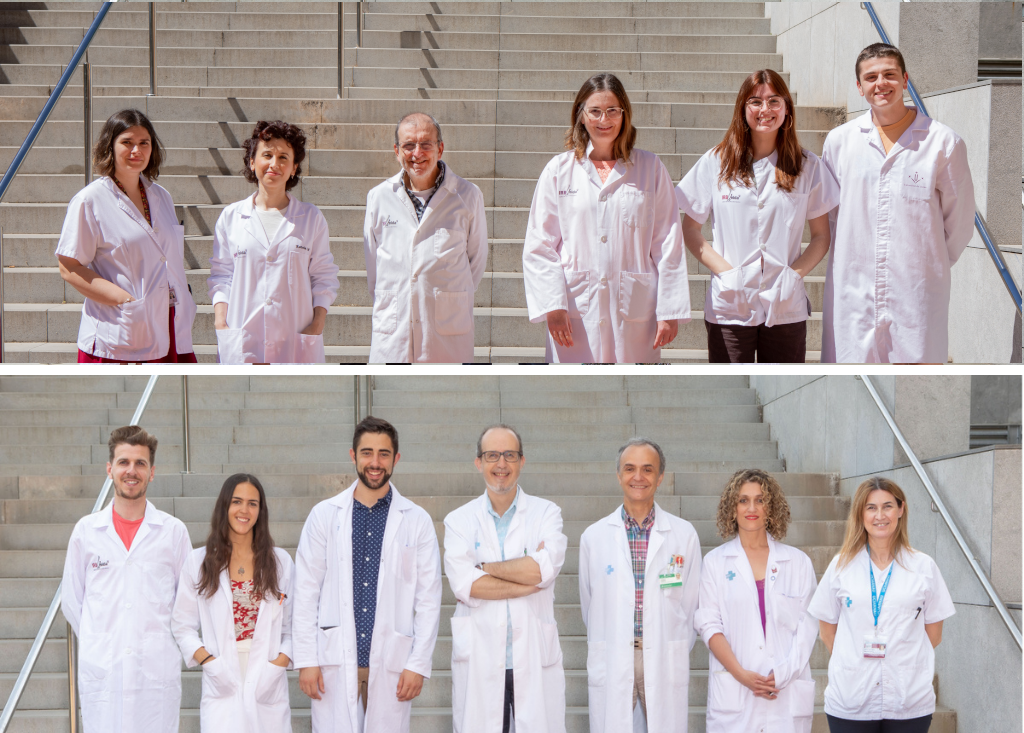Research Group in Immunology and Metabolism (GRIM)

Basic node: Immunology and Immunopathology Group (GRIIP)
- Studies of the immunopathogenic mechanisms involved in the development of Autoimmune Diabetes: most studies are carried out in mouse models of human Type 1 Diabetes (TD1). It also involves the study of environmental mechanisms (e.g. constituents of the intestinal microbiota) that may trigger or, on the contrary, slow down the development of this disease. We also occasionally study samples from patients or relatives with TD1. The studies also aim to identify the internal or external elements that allow us to apply a therapy (e.g. microbiotherapy) to treat this disease.
- Studies on the immunological mechanisms involved in the response against cancer: we analyse, in different animal models and in humans, the immune response that develops in the presence of cancer. We are currently studying an immunotherapy that we have found to be capable of boosting this natural immune response in this disease. We have focused mainly on melanoma, but our aim is to extend this immunotherapy to other types of cancer.
- Identification of novel cyclin D3-initiated signalling pathways responsible for beta-pancreatic cell viability and function: our group has described that pancreatic islet inflammation in autoimmune diabetes causes a downregulation of cyclin D3 expression and that cyclin D3 promotes beta-cell survival and well-being in a cell cycle-independent manner. Our group investigates novel cyclin D3 signalling pathways causally related to beta cell viability and physiology as a potential source of therapeutic approaches to autoimmune diabetes.
- Antigen-specific immunotherapy of T1DM through the use of tolerogenic dendritic cells (DCs) loaded with autoantigenic peptides (tiDCs): allogeneic pancreatic islet transplantation as a replacement therapy for the excess beta-pancreas eliminated during the autoimmune process requires the use of immunosuppressants to prevent both graft rejection and autoimmune relapse into the graft. Currently, immunosuppression is non-specific and generalised, increasing the graft recipient's risk of infections and tumour processes. Our group has developed a differentiation protocol to obtain tiDCs that promote the expansion of pancreatic autoantigen-specific regulatory/immunosuppressive T lymphocytes. In this way the immunosuppressive action remains restricted to pancreatic islets and not in the whole organism. Currently, we want to identify biomarkers of tiDCs responsible for their tolerogenic phenotype, in order to be able to intervene pharmacologically.
Clinical node: Obesity, Diabetes and Metabolism Research Group (ODIM)
- Prediction of weight response after BC: This line has been active since 2016, and has obtained funding in 3 competitive projects at national [PI18/00964, PI21/00462] and regional level [PERIS 2016-2020, SLT002/16/00497].
- Predicting metabolic changes caused by BC: Data on genetic susceptibility and resolution of comorbidities after BC are still scarce. However, the last decade has seen the rise of "metabolic surgery" for the possibility of achieving remission of type 2 diabetes. In addition, approximately half of the genetic variation associated with sleep apnoea-hypopnoea syndrome is associated with obesity, and some SNPs have also been associated with fatty liver associated with metabolic dysfunction.
- Diabetes and lung function: The lung is not usually considered a target organ in diabetes complications. Our Group, based mainly on the study of the BC waiting list population, has provided sufficient evidence to contradict this concept.
- Diabetes and sleep breathing: Evidence that type 2 DM has a negative effect on sleep breathing has been provided by our Group over the last few years.
- Chronobiology, sleep breathing and nocturnal hypoxia: Alterations in nocturnal breathing and circadian rhythms both influence human metabolism. Our group has initiated the study of genes in patients with obesity and type 2 DM.
- Computer-assisted telephone surveys and the use of self-reported anthropometric data: On 2 occasions we have used representative samples of the Spanish adult population, consisting of 1,000 subjects who underwent a computer-assisted telephone interview.
- Utility of the study of advanced glycation end-products (AGEs) by skin autofluorescence (SAF): We delved into the role of AGEs determination in obesity, metabolic diseases and cardiovascular disease.
- Study of body composition using mathematical formulae: Reference techniques to directly measure total and abdominal adipose tissue are complex, costly and time-consuming. Therefore, their widespread use in clinical practice is limited and various mathematical indices combining anthropometric data to assess total and abdominal fat mass have been proposed.






